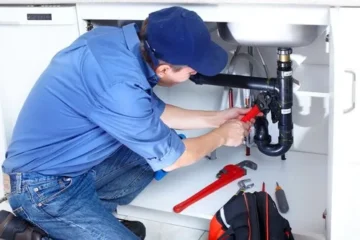Childhood Apraxia of Speech (CAS) is a complex and challenging speech disorder that affects a child’s ability to produce clear and coherent speech. Unlike other speech disorders, CAS is characterized by difficulties in planning and coordinating the movements necessary for speech. As such, traditional speech therapy approaches may not always be effective. This article explores innovative approaches to treating CAS, providing hope and practical solutions for children and their families.
Understanding Childhood Apraxia of Speech
What is Childhood Apraxia of Speech?
Childhood Apraxia of Speech is a motor speech disorder where children have trouble making accurate movements when speaking. The brain struggles to plan the movements of the lips, jaw, and tongue, which are needed for clear speech.
Symptoms of CAS
Children with CAS may exhibit:
- Inconsistent errors in consonants and vowels in repeated productions of syllables or words.
- Difficulty moving from one sound, syllable, or word to another.
- Stress on the wrong syllable or word.
- Distorted sounds, such as a sound that is not clear or sounds unusual.
Causes of CAS
The exact cause of CAS is unknown. However, it is believed to be related to neurological factors. Some potential causes include:
- Genetic mutations.
- Brain injuries.
- Neurological conditions.
Traditional Approaches to Treating CAS
Speech Therapy
Traditional speech therapy involves exercises designed to improve speech production. Techniques include:
- Repetition of sounds and words.
- Practice with syllables and words.
- Gradual increase in the complexity of speech tasks.
Oral-Motor Exercises
These exercises focus on strengthening the muscles used in speech. Activities might include:
- Blowing bubbles.
- Drinking through a straw.
- Making various facial expressions.
Limitations of Traditional Approaches
While traditional methods can be effective, they often fall short for children with CAS due to the unique challenges of the disorder. The inconsistency and difficulty with motor planning require more specialized approaches.
Innovative Approaches to Treating CAS
Dynamic Temporal and Tactile Cueing (DTTC)
DTTC is a method developed specifically for children with CAS. It involves:
- Direct imitation with simultaneous cues.
- Gradual reduction of cues as the child improves.
- Emphasis on movement accuracy and speech sound production.
Benefits of DTTC
- Tailored to the child’s specific needs.
- Encourages motor learning and planning.
- Uses a hierarchical structure to build complexity.
PROMPT Therapy
PROMPT (Prompts for Restructuring Oral Muscular Phonetic Targets) therapy uses tactile cues to support speech production. The therapist uses touch to guide the child’s articulatory movements.
Key Features of PROMPT
- Multisensory approach.
- Focus on motor skills and sensory feedback.
- Personalized to each child’s needs.
Augmentative and Alternative Communication (AAC)
For some children with severe CAS, AAC devices can be a crucial tool. These include:
- Speech-generating devices.
- Picture exchange communication systems.
- Sign language.
Advantages of AAC
- Provides a voice for non-verbal children.
- Reduces frustration by enabling communication.
- Can be used alongside traditional therapies.
Technology-Assisted Interventions
Modern technology offers several innovative tools for treating CAS, such as:
- Speech therapy apps.
- Interactive games.
- Virtual reality experiences.
Examples of Technology-Assisted Tools
- Speech Therapy Apps: Apps like Articulation Station and Apraxia Ville offer engaging exercises and feedback.
- Interactive Games: Games designed to improve speech through play and interaction.
- Virtual Reality: VR can create immersive environments for practicing speech in real-world scenarios.
Intensive Speech Therapy Programs
Intensive programs involve daily or several times weekly sessions over a short period. These programs are designed to:
- Provide concentrated practice.
- Promote rapid progress.
- Include family involvement for continuous support at home.
Examples of Intensive Programs
- Kaufman Speech to Language Protocol (K-SLP): Focuses on simplifying word production to build complexity gradually.
- Nuffield Dyspraxia Programme (NDP3): Structured program targeting speech production from single sounds to connected speech.
Holistic Approaches
Integrating Physical and Occupational Therapy
Children with CAS may benefit from integrating physical and occupational therapy to address any co-occurring motor difficulties.
Benefits
- Enhances overall motor skills.
- Supports speech production through better control and coordination.
- Addresses sensory integration issues that may impact speech.
Music and Rhythmic Therapy
Music therapy can be an effective tool for children with CAS, incorporating rhythm and melody to support speech development.
Techniques
- Singing and chanting.
- Playing musical instruments.
- Using rhythmic patterns to improve speech timing and coordination.
Parent and Family Involvement
Active involvement of parents and family members is crucial in the treatment of CAS. Strategies include:
- Home practice of therapy exercises.
- Using positive reinforcement and encouragement.
- Creating a supportive and communicative environment.
Benefits
- Continuous reinforcement of skills learned in therapy.
- Emotional and motivational support for the child.
- Better understanding of the child’s progress and challenges.
Future Directions in CAS Treatment
Genetic and Neurological Research
Ongoing research into the genetic and neurological underpinnings of CAS holds promise for more targeted treatments. Understanding the specific causes and mechanisms can lead to:
- Personalized therapy approaches.
- Early diagnosis and intervention.
- Potential pharmacological treatments.
Advancements in Neuroplasticity
Research into neuroplasticity – the brain’s ability to reorganize itself – suggests that early and intensive intervention can significantly improve outcomes for children with CAS. Techniques that harness neuroplasticity include:
- Repetitive and varied speech practice.
- Combining cognitive and motor tasks.
- Utilizing neuroimaging to monitor progress.
Collaborative Care Models
Integrated care models that bring together speech therapists, occupational therapists, neurologists, and educators can provide comprehensive support for children with CAS.
Advantages
- Holistic approach to treatment.
- Improved communication among professionals.
- Coordinated care plans tailored to the child’s needs.
Conclusion
Childhood Apraxia of Speech is a challenging disorder, but innovative approaches are providing new hope and effective solutions. From specialized therapies like DTTC and PROMPT to technology-assisted interventions and holistic approaches, there are numerous ways to support children with CAS. As research continues to advance our understanding of this complex disorder, the future looks bright for children and families affected by CAS. With the right combination of therapies and support, children with CAS can achieve significant improvements in their speech and communication skills.
Stay in touch to get more updates & news on Web of Buzz !




